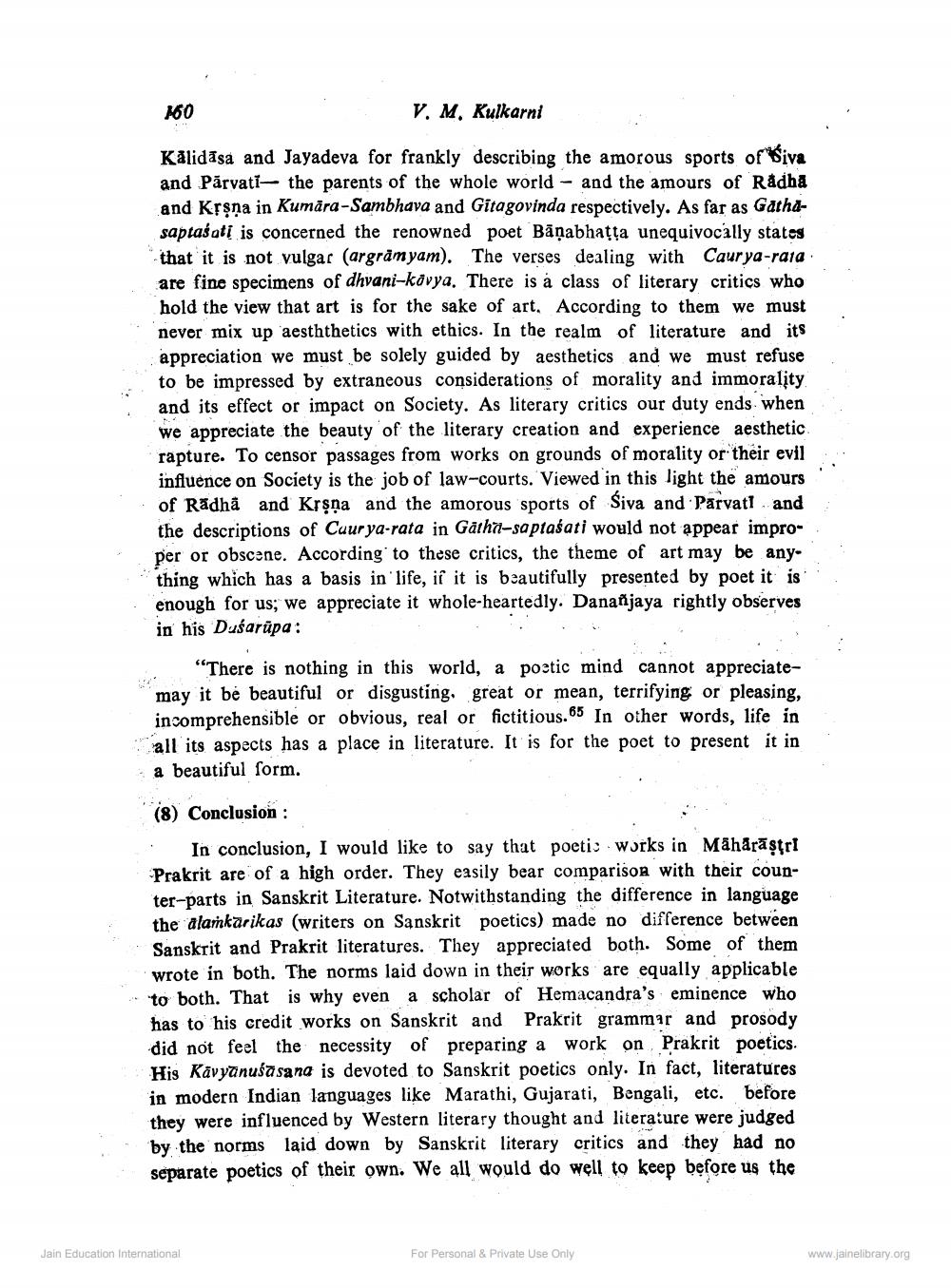________________
160
V. M. Kulkarni
Theot Bàn, espect
Kalidasa and Jayadeva for frankly describing the amorous sports of Siva and Părvati - the parents of the whole world - and the amours of Radha and Krsna in Kumära-Sambhava and Gitagovinda respectively. As far as Gathasaptaśati is concerned the renowned poet Bāṇabhațţa unequivocally states that it is not vulgar (argrämyam). The verses dealing with Caurya-raia are fine specimens of dhvani-kavya. There is a class of literary critics who hold the view that art is for the sake of art. According to them we must never mix up aesththetics with ethics. In the realm of literature and its appreciation we must be solely guided by aesthetics and we must refuse to be impressed by extraneous considerations of morality and immorality and its effect or impact on Society. As literary critics our duty ends when we appreciate the beauty of the literary creation and experience aesthetic rapture. To censor passages from works on grounds of morality or their evil influence on Society is the job of law-courts. Viewed in this light the amours of Radha and Krşņa and the amorous sports of Śiva and Parvati and the descriptions of Cuurya-rata in Gatha-saptaśati would not appear improper or obscene. According to these critics, the theme of art may be any. thing which has a basis in life, if it is beautifully presented by poet it is enough for us; we appreciate it whole-heartedly. Dananjaya rightly observes in his Dušarüpa :
,
"There is nothing in this world, a postic mind cannot appreciatemay it be beautiful or disgusting, great or mean, terrifying or pleasing, incomprehensible or obvious, real or fictitious.65 In other words, life in all its aspects has a place in literature. It is for the poet to present it in a beautiful form.
(8) Conclusion :
In conclusion, I would like to say that poeti: works in Māhārāstri Prakrit are of a high order. They easily bear comparison with their counter-parts in Sanskrit Literature. Notwithstanding the difference in language the alamkārikas (writers on Sanskrit poetics) made no difference between Sanskrit and Prakrit literatures. They appreciated both. Some of them wrote in both. The norms laid down in their works are equally applicable to both. That is why even a scholar of Hemacandra's eminence who has to his credit works on Sanskrit and Prakrit grammar and prosody did not feel the necessity of preparing a work on Prakrit poetics. His Kävyānuśasana is devoted to Sanskrit poetics only. In fact, literatures in modern Indian languages like Marathi, Gujarati, Bengali, etc. before they were influenced by Western literary thought and literature were judged by the norms laid down by Sanskrit literary critics and they had no separate poetics of their own. We all would do well to keep before us the
Jain Education International
For Personal & Private Use Only
www.jainelibrary.org




